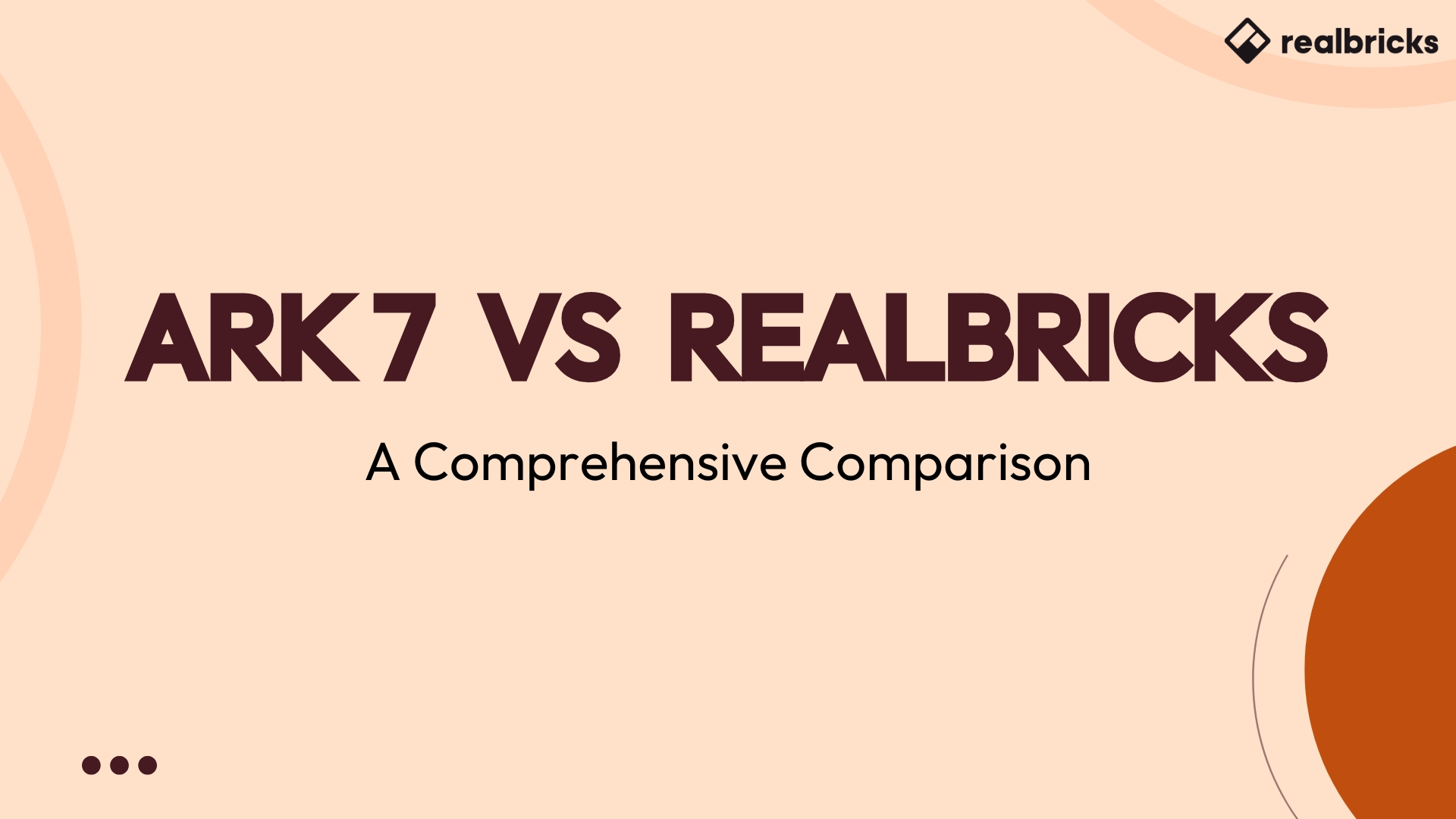Compare Ark7 vs Realbricks on dividends, liquidity, property structure, and investor access. See which real estate platform fits your goals.

Fractional real estate investing is gaining momentum as more investors look for ways to participate in rental property income without the cost and headaches of traditional ownership. Two platforms leading this space are Ark7 and Realbricks. While both make it possible to buy shares of rental properties, the differences in structure, liquidity, and accessibility create very different outcomes for investors.
Below, we compare Ark7 and Realbricks across key categories to help you decide which platform offers the smarter path.
Ark7 uses SEC-qualified Regulation A+ offerings for its long-term rental properties, making them open to all investors. However, Ark7 enforces a 12-month holding period before any shares can be sold. That restriction applies whether you bought in the primary offering or later on the secondary market.
Realbricks offers SEC-regulated, debt-free long-term rental properties to all U.S. investors, with a clear, consistent structure. Every investor has equal access, starting with just $100 — and there are no holding periods. The Realbricks secondary market is expected to be released Q1 of 2026. Once available, a property will move to the secondary market 30 days after it becomes fully funded on the primary marketplace. Fully funded means all the available shares are sold. Once listed on the secondary market, investors will be able to place sell orders, to create a chance for liquidity.
Comparison:
Ark7 focuses on long-term rental properties, generally single-family homes and condos. Some of these properties are financed with mortgages, which can expose investors to risks tied to interest rates and refinancing costs. While investors benefit from exposure to income-producing assets, resale restrictions further limit flexibility.
Realbricks specializes in debt-free, long-term single-family rentals in Omaha, with plans to expand to additional markets and property types. Because every property is fully paid off, investors are shielded from risks related to mortgages and interest rate fluctuations. The focus is on stability, accessibility, and long-term growth.
Comparison:
Ark7 pays monthly distributions from rental income, with returns averaging around 4.4%–4.5% annualized in 2025, based on their published performance reports. Historically, their yields have ranged from about 2.5% to 6.4%, depending on property performance.
Realbricks distributes dividends quarterly, in line with standard real estate reporting cycles. While Realbricks publicly estimates a 6% annual dividend yield, actual performance so far has been stronger: in the last three quarters, investors received 2%–2.25% each quarter, putting them on pace for 8–9% annualized returns. This combination of conservative estimates and stronger-than-expected payouts provides both transparency and upside for investors.
Comparison:
Comparison:
Both Ark7 and Realbricks offer iOS and Android apps as well as web platforms, making it easy for investors to browse properties, invest, and manage their portfolios from any device. Transactions on both platforms are handled in U.S. dollars, and neither requires crypto wallets or technical expertise.
Comparison:
Comparison:
Both Ark7 and Realbricks make it simple for investors to buy shares of rental properties, with iOS, Android, and web apps that use U.S. dollars and an easy investing experience. Where they diverge is in the details that matter most to investors.
Realbricks emphasizes debt-free properties, no personal lockup periods, and a planned structure that is designed to create more flexibility around liquidity options. On top of that, Realbricks’ dividend payouts have historically trended higher, putting more income back into investors’ hands.
For those weighing the options, both platforms are accessible and user-friendly — but Realbricks delivers more flexibility, historically stronger dividend returns, and a more reasonable planned path to potential liquidity that will make sense for all investors.
Disclaimer: Investing in real estate involves risks, including the potential loss of capital. This content is for informational purposes only and is not intended as investment advice. Investors should perform their own research and consult with financial professionals before making investment decisions.
Be the first to know about property launches, portfolio updates, and announcements by subscribing to our newsletter.